211 Judge as ye would be judged
JUDGE NOT THAT YE BE NOT JUDGED
by David Hancock

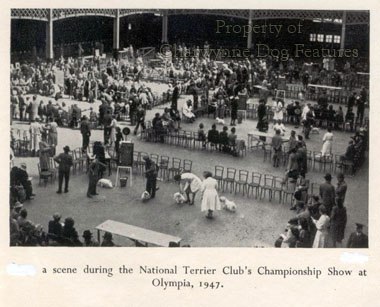 "From their institution at Newcastle in 1858 there has been a growing feeling of dissatisfaction with the awards of the judges. Animals which have been successful under one set of judges in obtaining a first prize, have been altogether overlooked by another, not even obtaining a commendation, though in equally good condition at both places, and often with the same or nearly the same competitors." No, these words were not written this year by a disappointed exhibitor at WELKS or the LKA. They were written by the esteemed "Stonehenge" in 1878. He went on to state that single judging requires "some length of education" and to recommend a scale of points for each breed being judged.
"From their institution at Newcastle in 1858 there has been a growing feeling of dissatisfaction with the awards of the judges. Animals which have been successful under one set of judges in obtaining a first prize, have been altogether overlooked by another, not even obtaining a commendation, though in equally good condition at both places, and often with the same or nearly the same competitors." No, these words were not written this year by a disappointed exhibitor at WELKS or the LKA. They were written by the esteemed "Stonehenge" in 1878. He went on to state that single judging requires "some length of education" and to recommend a scale of points for each breed being judged.
"Not many shows can afford the expense of engaging a sufficient number of judges to enable each class to be judged by a gentleman who is qualified to do so, and there are very few judges who are able to deal fairly by all breeds. The unfortunate result of this is that many varieties are unsatisfactorily placed time after time"...The view of a disgruntled Bloodhound breeder at Crufts last year? No, the words of Vero Shaw in 1879. He went on to disparage judging to a scale of points, stating that..."when dogs are judged by points, one notoriously defective in one portion of its anatomy can be awarded a prize..." He overlooked of course the ability then for "negative" points to be awarded.
Writing in 1897, Hugh Dalziel recalls being told by S.E.Shirley when president of the Kennel Club that..."Life's too short for the practice of judging by points". This surprised Dalziel as it came from a man who had "most precisely laid down the absolute numerical value of each point in the breed of Collie" in an article. Dalziel himself argued that each judge was an instructor, with every award he makes acting as a lesson. I think that that is very apt. He supported judging to a scale of points, describing any other system as "too loose". There is probably some truth in that. In his valuable three volume work entitled "British Dogs", Dalziel writes, perceptively: "What should be indelibly fixed on the minds of all concerned is that the judge's influence does not end, but really begins, with the distribution of prizes"...We have all seen the produce of unworthy champions and the long term harm done in breeds by newcomers chasing prize-winning but poor quality stock.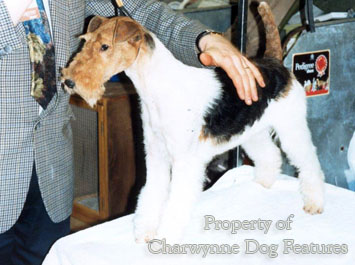
Henry Webb, in his quaintly titled "Dogs, their points, whims, instincts and peculiarities" of 1882, made a key point on judges when he wrote that exhibitors should remember..."that by entering their dogs for competition they tacitly approve the appointment of the judges;" And he's right -- what really is the point of showing your dog under a judge you don't respect? If he places your dog, do you withdraw?
In his "Prize Dogs", over seventy years ago, Theo Marples was writing that "The prevailing mistake which exhibitors make is thinking that their geese are swans, or, in other words, thinking their dogs better than they really are." It is this fundamental flaw which not only brings dogs into the ring which have no right to be there but also leads to the quite shocking unsporting behaviour which we have all witnessed at shows.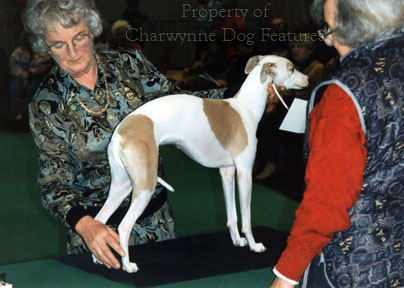
This collection of quotes and comments from the early days of dog shows brings our contemporary talking points into perspective. So often over the years we seek remedy in systems and procedures when again and again it is human frailty causing the difficulty. We must acknowledge that the desire to win brings out the darker side of human nature, that corruption is always lurking when making money is an aim but that human fallibility is proportionately more likely to lead to miscalculation than misdeed. There will always be more incompetent judges than corrupt ones. Removing the corrupt ones depends on the moral standards of those who become aware of it; reducing incompetence is the bigger problem.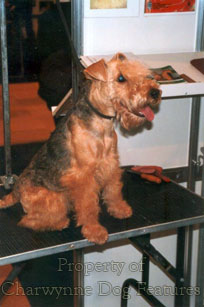
In his "The Practical Guide to Showing Dogs" of 1956, Captain Portman-Graham wrote: "It has for some time been advocated that a training system would be beneficial, whereby a new judge could officiate with a senior one, making his own unofficial awards for comparison later with the official ones, with discussion on his placings and advice given by the responsible judge. The time has come for this sound plan to be put into operation." Nearly forty years on, this "sound plan" might find some supporters. In his book "The Dog Business" of 1960, Douglas Appleton wrote that "There are dishonest judges; there are incompetent judges. Actually both are dishonest, for there is no honour in accepting a job you are unfit to do." I don't think I can improve on that!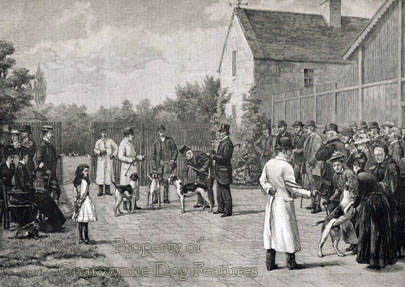
I have been attending dog shows since 1947 when I worked as a teenaged kennelboy for my local vet. I have watched the most famous British dog show judges of the last nearly fifty years in action. At various times I have been surprised to see a whole series of classes completed at championship shows without the judge once examining the feet of any exhibit. Is that not incompetence? I have watched judges "go over", with their hands, the anatomies of breeds of sporting dogs and then put up a dog with soft muscles. A gundog, hound or terrier must have hard muscles to be in show condition. There is little point in placing hands on dogs if you don't know soft muscle from hard.
I have observed dogs being strung up on nylon cord collars to mask faulty movement. We all see the wholly undesirable habit in the ring of stuffing food in the dog's mouth so that it looks expectant and therefore alert. I saw a bullmastiff (a breed I favour) being fed constantly to deter it from attacking the other exhibits or snapping at the judge. Such a dog should have been thrown out of the ring. But the "highly rated" judge elected not just to ignore this deceit but refrained from inspecting the dog's mouth too. Dogs must never be fed in the show ring and should always be shown on a loose lead so that they reveal themselves as they are. These are far more important matters than double handling will ever be.
Writing in "Dog World" in December 1994, Audrey Dallison was advocating the appointment of "neutral official observers to watch judges as a whole, and new judges in particular." I rather like that idea. I have seen judges of high repute award prizes to a pointer with a hackney action, a cow-hocked Irish wolfhound, a bloodhound quite shockingly out-at-elbow, a mastiff so unsound in construction it could get no power from its rear end and endless dogs placed which were in clear breach of their own breed standard. Such faults are scarcely a matter of opinion or subjective judgement. There are far too many incompetent judges; why should they not be judged?
Houndshow judging at shows such as Peterborough and Honiton is conducted with two judges in the ring, who discuss the entry before them. This must increase competence, reduce corruption and encourage confidence. Conformation and movement are judged, just as in KC-licensed shows. Masters of Foxhounds do care what their hounds look like. Newton Rycroft, a greatly respected authority on working scenthounds has written: "Conformation will always be important, but perhaps we look at this importance from the wrong angle. What we need I think is not so much fantastic physical beauty, which may or may not have nose and voice, but a certain standard of working conformation BELOW which hounds must not fall."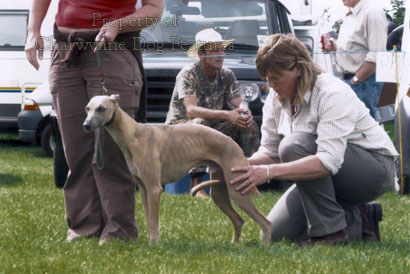
In KC dog shows we regularly see exhibits which fall below a certain standard or breach their own breed standard. But how often are such entries thrown out of the ring. The judge out of misguided kindness goes "through the motions" with such dogs and surprise surprise the dog is entered for another show. The pursuit of excellence is a ruthless business not a game show in which everyone has to win something to go home happy. It is unwise to judge on faults; it is cruel to a breed to overlook blatant faults. Breed standards often state "the seriousness with which the fault should be regarded should be in exact proportion to its degree." But how can that be applied in particular? What are the disqualifying faults? 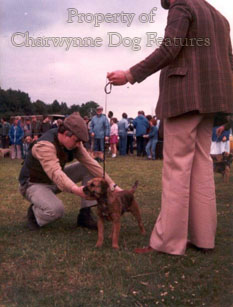
There would be sense in each breed standard stipulating a minimum standard of "working conformation" and listing faults which disqualify. This may be more valuable in sporting and working breeds where functional capability must always be kept in mind. The old system of "negative" points might have relevance in this context. Standards of judging have deteriorated and it is foolish to press on regardless.
Winning at dog shows so often determines the quality of future stock and is therefore vital for the good of pedigree breeds. Hugh Dalziel was right one hundred years ago when he wrote that the judge's influence really begins not ends with the awarding of prizes and that each judge is an instructor. Having two judges in the ring would undoubtedly go a long way in countering allegations of bias or corruption. Having random anonymous monitoring of judges in addition could prevent breed standards being overlooked, ignored or defied. If judges are not themselves judged, they are being given free licence to indulge their personal whims. Judging to a scale of points, as one element -- not the only one, in placing dogs, would bring a more objective dimension to decision making. The awarding of negative points would punish faults without encouraging judging on faults.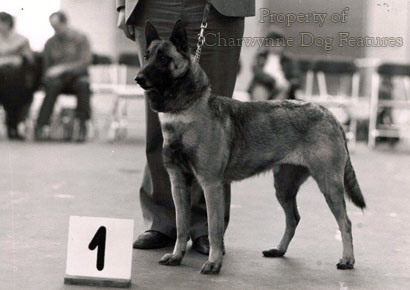
I agree with "Stonehenge" that single judging requires some "length of education". Unless we introduce training and examinations for judges then frankly we have not progressed in the last hundred years. Judging entirely by eye and experience alone would not be acceptable in other walks of life and I do not see why judges at dog shows should be a special case. Judging standards and well-worded breed standards represent two of the most important aspects of the Kennel Club's work. And that body has a job on its hands now if dog shows are to withstand scrutiny and retain exhibitor confidence.
It makes me angry to see a pointer with a hackney action not only win its breed award but go on to win the gundog group at Crufts, under an allegedly top flight judge. The pointer's breed standard is as badly written as most of the others, but it is unambiguous on this point: "Gait -- definitely not a hackney action". When I wrote about this absurd judging in a sporting magazine, I received thanks from show breeders who felt their own anger should be restrained. There is an unhealthy, unjustified and wholly undesirable smugness about judging at dog shows in the United Kingdom. It is time for change. It is time for judges to be judged too.